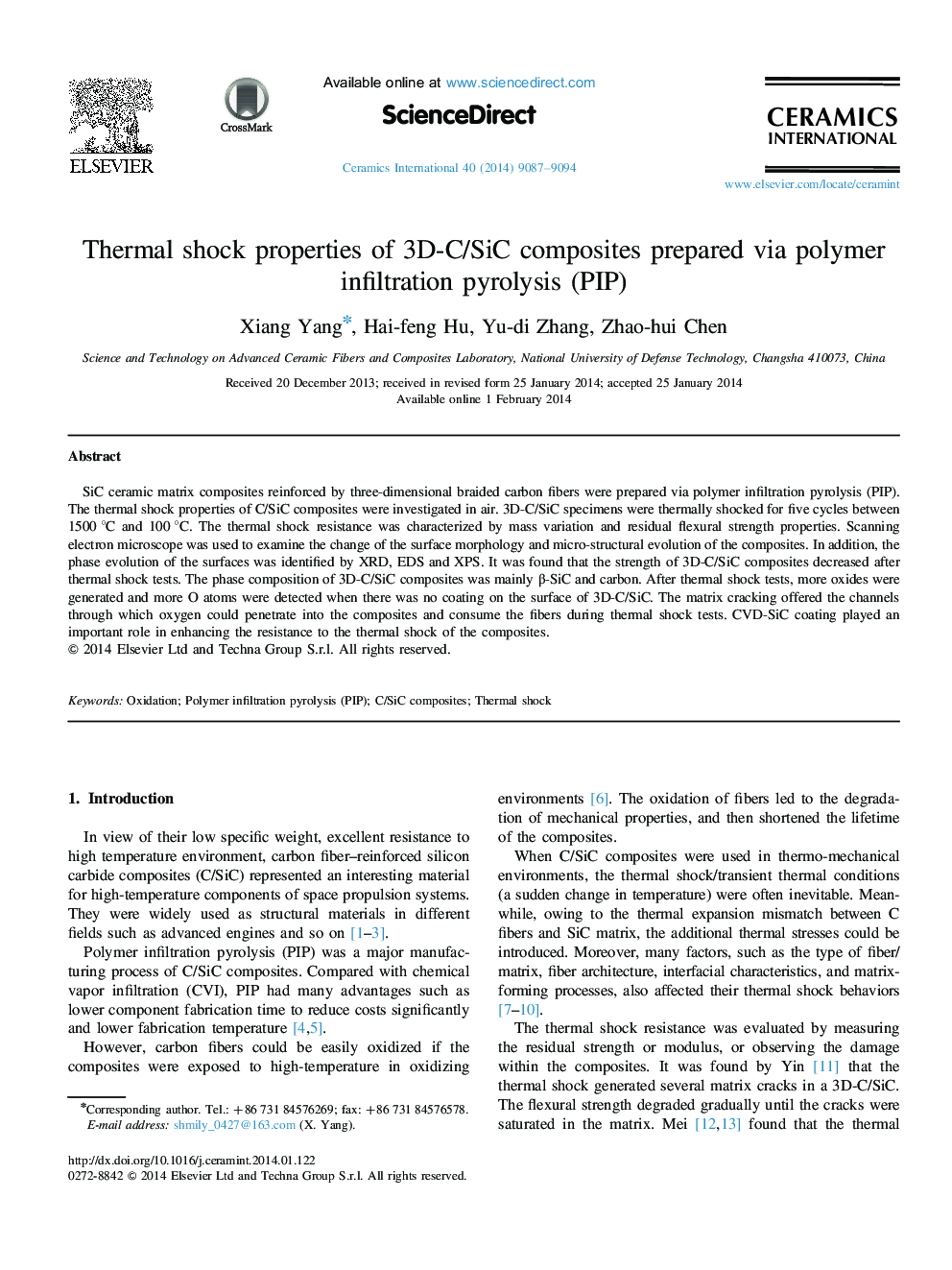| Article ID | Journal | Published Year | Pages | File Type |
|---|---|---|---|---|
| 10625116 | Ceramics International | 2014 | 8 Pages |
Abstract
SiC ceramic matrix composites reinforced by three-dimensional braided carbon fibers were prepared via polymer infiltration pyrolysis (PIP). The thermal shock properties of C/SiC composites were investigated in air. 3D-C/SiC specimens were thermally shocked for five cycles between 1500 °C and 100 °C. The thermal shock resistance was characterized by mass variation and residual flexural strength properties. Scanning electron microscope was used to examine the change of the surface morphology and micro-structural evolution of the composites. In addition, the phase evolution of the surfaces was identified by XRD, EDS and XPS. It was found that the strength of 3D-C/SiC composites decreased after thermal shock tests. The phase composition of 3D-C/SiC composites was mainly β-SiC and carbon. After thermal shock tests, more oxides were generated and more O atoms were detected when there was no coating on the surface of 3D-C/SiC. The matrix cracking offered the channels through which oxygen could penetrate into the composites and consume the fibers during thermal shock tests. CVD-SiC coating played an important role in enhancing the resistance to the thermal shock of the composites.
Related Topics
Physical Sciences and Engineering
Materials Science
Ceramics and Composites
Authors
Xiang Yang, Hai-feng Hu, Yu-di Zhang, Zhao-hui Chen,
